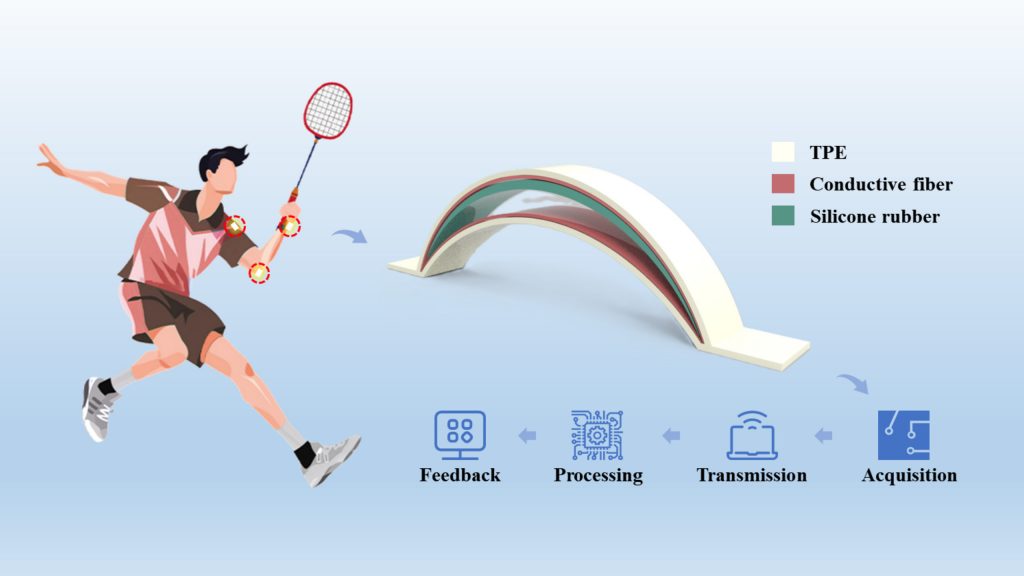Flexible sensors and intelligent monitoring can provide direct feedback to badminton players.
From the Journal: APL Materials

WASHINGTON, July 23, 2024 – Today’s athletes are always on the lookout for new techniques and equipment to help them train more effectively. Modern coaches and sports trainers use intelligent data monitoring through videos and wearable sensors to help enhance athletic conditioning. However, traditional video analysis and wearable sensor technologies often fall short when tasked to produce a comprehensive picture of an athlete’s performance.
In APL Materials, by AIP Publishing, researchers from Lyuliang University developed a low-cost, flexible, and customizable sensor for badminton players that overcomes current monitoring constraints.
Badminton is known for its many technical movements and the dynamic speed and precision required to play successfully. Monitoring the postures, footwork, arm swings, and muscle strength shown by badminton players is limited by video shooting angles and the discomfort of rigid wearable sensors.
“We integrated our expertise in flexible sensor technology and intelligent perception systems into badminton motion monitoring for a quantitative analysis of badminton techniques, to provide more professional guidance for badminton players,” said author Yun Yang.
The team used triboelectric sensors to construct their intelligent monitoring system because they are easy to adapt for flexible, wearable devices. A triboelectric sensor transfers charge from one material to another when the materials come into contact and slide past each other. No external power supply is required.
To minimize interference during bending and twisting, the team built a 3D-printed flexible arch-shaped sensor encased in a thermoplastic elastomer. This design is comfortable during use and can be easily customized to individual athletes.
The sport-friendly construction of the sensor is responsive to body motions often seen in sports and is suitable for many active body parts, such as wrists, elbows, shoulders, fingers, and knee joints, as well as bending points at the waist and neck.
The intelligent badminton sports system was made from three of the 3D-printed sensors, a multichannel acquisition card, and neural network algorithms. This technical design provides online monitoring and real-time feedback to the athlete. It recognizes seven typical movements in the badminton game, including forehand serve, backhand serve, forehand hook, and backhand hook, with a recognition accuracy rate of 97.2%.
“Our research provides new ideas for solving the problems of large joint bends or twists faced by current 3D-printed triboelectric sensors,” said Yang. “It offers a new solution for monitoring and analyzing triboelectric sensors in badminton and can be extended to other smart sports fields. This has great potential for intelligent sports monitoring and analysis in the era of big data.”
Future work by the team will continue to focus on triboelectric sensors to propose new solutions for human health monitoring and pathological diagnosis.
###
For more information:
Wendy Beatty
media@aip.org
301-209-3090
Article Title
Authors
Yun Yang, Lei Jia, Ziheng Wang, Jie Suo, Xiaorui Yang, Shuping Xue, Yingying Zhang, Hui Li, and Tingting Cai
Author Affiliations
Lyuliang University
